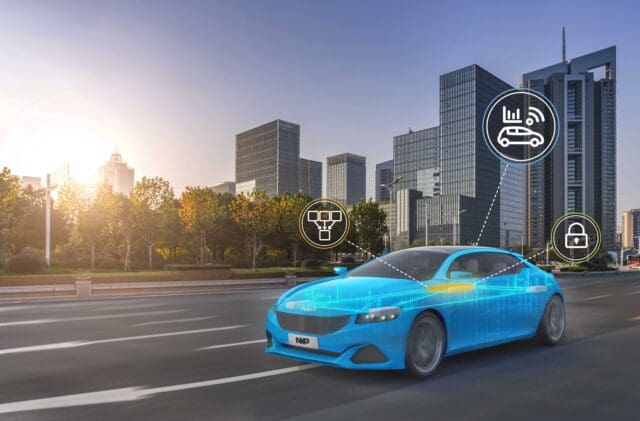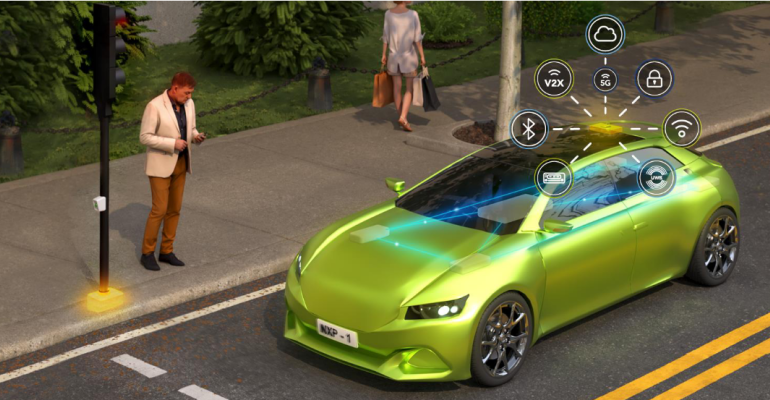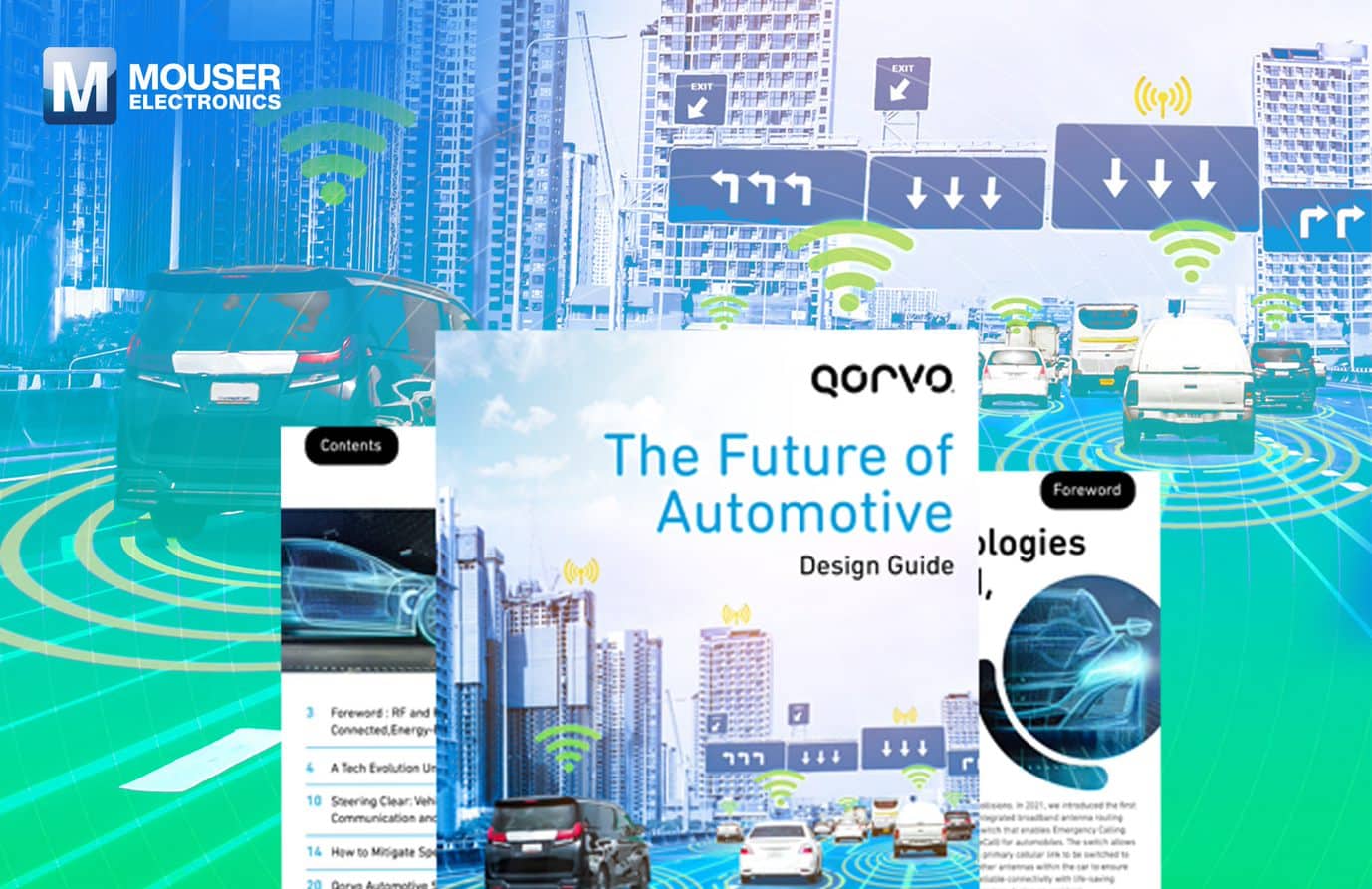By Brian Carlson, Director of Global Solutions and Product Marketing, NXP Semiconductors
Original Equipment Manufacturers (OEMs) face significant challenges in complex vehicle architectures. Some high-end vehicles today have more than 100 processors, all of which drive their own network and connection requirements, with combinations of CAN, LIN, FlexRay, Ethernet, and Gigabit Ethernet. All of this network requires miles of cable inside the car, resulting in a very complex harness that is expensive and can weigh as much as two passengers. Original equipment manufacturers want to simplify the topology of vehicle architectures to reduce BOM complexity and cost. They also want to have faster innovation cycles. By developing more software-defined vehicles, rather than the current hardware-focused approach with incremental, fixed-function electronic control units (ECUs), OEMs can be more agile and support intelligent upgrades in the future.
The path to domain and zonal architectures
To overcome these challenges and meet goals, OEMs around the world are shifting to new architectures that integrate ECU functionality into more powerful multi-core processors that support software isolation and upgradeability. This integration occurs both logically and physically and, in some cases, with a combination of both in the same E/E architecture of the vehicle. Logical integration organizes functions into domains, while physical integration organizes functions based on their location within the vehicle into zones.
Logical integration occurs in the functional areas of vehicle dynamics, vehicle-body interface and comfort. The vehicle dynamics domain organizes all functionality around how a car moves and includes the powertrain, braking system, steering, suspension, and chassis management. With the rapid move to electric vehicles (EVs), this domain handles complex battery and power management and controls electric motor inverters. The integration of this functionality is creating new propulsion domain controllers.
The vehicle network domain securely manages the vehicle data stream as a central gateway with cloud connectivity and provides more centralized computing for vehicle services. The integration of this functionality is driving more powerful service-oriented gateways.
The third area is bodywork and comfort, which is the broad interface of how the vehicle reacts to passengers: collision detection, airbags, motor control, pumps and switches, HVAC, and interior and exterior lighting. The integration of this functionality is creating body domain controllers.
Physical integration into zones is typically implemented as zone controllers at the four corners of the vehicle handling cross-domain functionality, with each corner having a redundant Ethernet backbone connected to a centralized vehicle computer providing centralized vehicle control and services. . Zone controllers may require a combination of real-time and application processing to provide necessary cross-functional functions such as lighting, sensor management (tyres, radar, imaging), suspension, inverter control, safety system, etc. brakes, steering, etc. within a vehicle area. Zonal controllers typically require more real-time multicore processing. Instead, the vehicle's computer would require more multicore application processing. However, a mix of real-time and application kernels can be used depending on the OEM's approach.
Original equipment manufacturers must address modularity and flexibility to take advantage of these new architectural approaches to vehicles. Modularity offers homogeneity between system elements by using the same hardware for different tasks, with the operation of these devices defined by the software. The flexibility allows vehicle systems to be updated over time via over-the-air (OTA) updates to fix software defects, improve vehicle features, or add new ones. Established, software-defined ECUs that can be upgraded over time allow automakers to support their vehicles more effectively.
The key, regardless of the architectural approach domain, zoned, or a hybrid of both, is that future vehicle E/E architectures require fundamentally new processors. Vehicle processors must support real-time and application multi-core processing to convert multiple physical ECUs into software-embedded virtual ECUs. Moving from hardware-centric to software-defined vehicles simplifies upgrades throughout the life of the vehicle. Five years ago, NXP recognized that evolving software and networking requirements would outpace traditional MCUs and responded by developing the S32 automotive processing platform to meet the challenge.
Integration with S32G vehicle processors
As part of NXP's S32 platform, the S32G family of processors offers a consistent and scalable architecture that enables in-vehicle processing consolidation. With pin-compatible chips ranging from a multicore microcontroller to a combination of multicore microcontrollers and microprocessors, the S32G processors enable service-oriented gateways, domain controllers, security processors, and vehicle computers, among other vehicle functions. The processors support multiple applications in parallel with hardware isolation. Each processor core can only access its own memory and hardware-protected peripherals, but has an efficient mechanism for sharing data with other processors when necessary.
S32G processors combine secure, real-time application processing with built-in hardware security, network acceleration, and heterogeneous in-vehicle network interfaces. High-performance multi-core Arm® MCUs and MPUs with application-specific network hardware acceleration, which offloads processors to deliver valuable services with deterministic network performance, are needed by OEMs in the complex, real-time environment of modern vehicle. Its Hardware Security Engine (HSE) enables high-performance integrated hardware security acceleration, along with support for Public Key Infrastructure (PKI) for trusted key management. The firewalled HSE is the root of trust that supports secure boot, provides system security services, and protects against side channel attacks.
ASIL D's capabilities, including lockstep Arm® Cortex®-M7 microcontroller cores, and an industry-first ability to lock groups of Arm Cortex-A53 application cores, enable automotive security to support new levels of performance with high-level operating systems and increased memory support.
The value of processing scalability has been seen with the popular S32G2 series of four compatible devices launched into production in Q2021 32, as OEMs have taken advantage of them in several key areas of the vehicle with varying levels of processing needs. The S234G7M, with three double-step (loclstep) Cortex-M32 cores, is available for real-time embedded applications. For applications that require application processing in addition to real-time processing, the S233G32A, S254G32A and S274G53A models offer higher levels of performance with up to four Cortex-AXNUMX cores to provide integration of vehicle applications and services.
Paving the way for software-defined vehicles
The shift to software-defined vehicles requires faster and more capable processors. To help the automotive industry evolve at high speed, NXP has expanded its S32G family with the introduction of the S32G3 series with four initial devices that provide more performance, memory and networking capabilities. Software and pin compatible with the S32G2 series, these devices provide 1,33 times more real-time processing, 2,6 times more application processing, 2,5 times more Ethernet bandwidth on two ports, 2 times more domains isolation, 2 times more L2 cache and 2,5 times more on-chip memory than the current highest performing S32G2 device, the S32G274A. The S32G family now has a wide range of 8 compatible processors covering an order of magnitude in processing. By being footprint compatible, OEMs can design an integration platform that can scale with the modularity and flexibility needed for new vehicle E/E architectures. The S32G3 series helps designers further ECU consolidation with software-defined virtual vehicle ECUs.
Addressing future vehicle architectures today
The S32G processor portfolio contributes to the transition from conventional vehicle architectures to domain and zonal architectures used by OEMs to meet the challenges and enable software-defined vehicles. By having this scalable portfolio of software compatibility and pin packs available, the S32G offers OEMs many opportunities for reuse and flexibility in software development and placement of their application across different locations on the vehicle.
S32G processors are compatible with reference design and evaluation boards, along with rugged GoldBox platforms for in-vehicle integration. A wide range of enablement software, including the S32G Vehicle Integration Platform (GoldVIP), accelerates customer evaluation, development, proof of concept and time to market. In addition, NXP also has a broad and growing ecosystem of partners, offering operating systems, virtualization, execution environments, application software, boards, software tools, engineering services, in-depth training, and cloud services.








